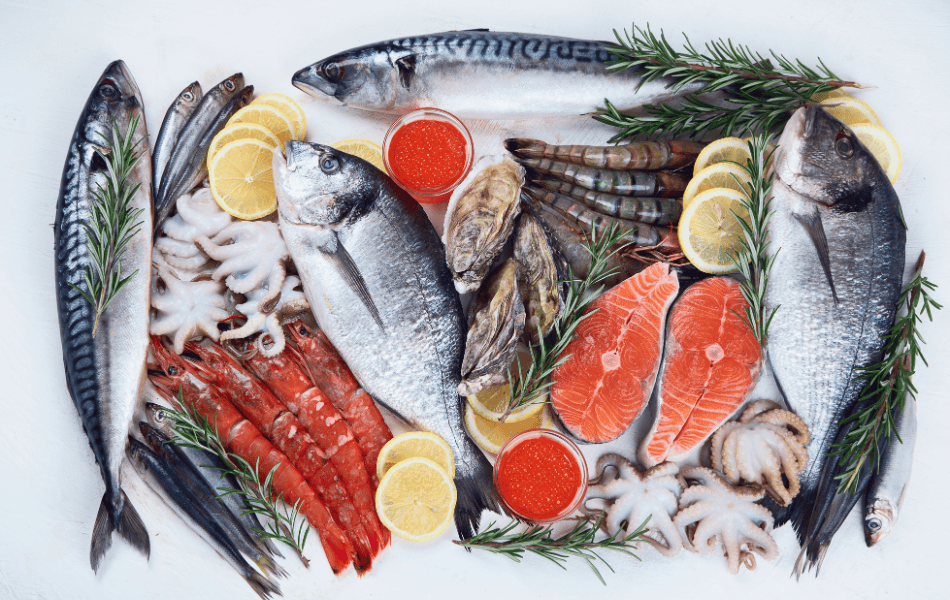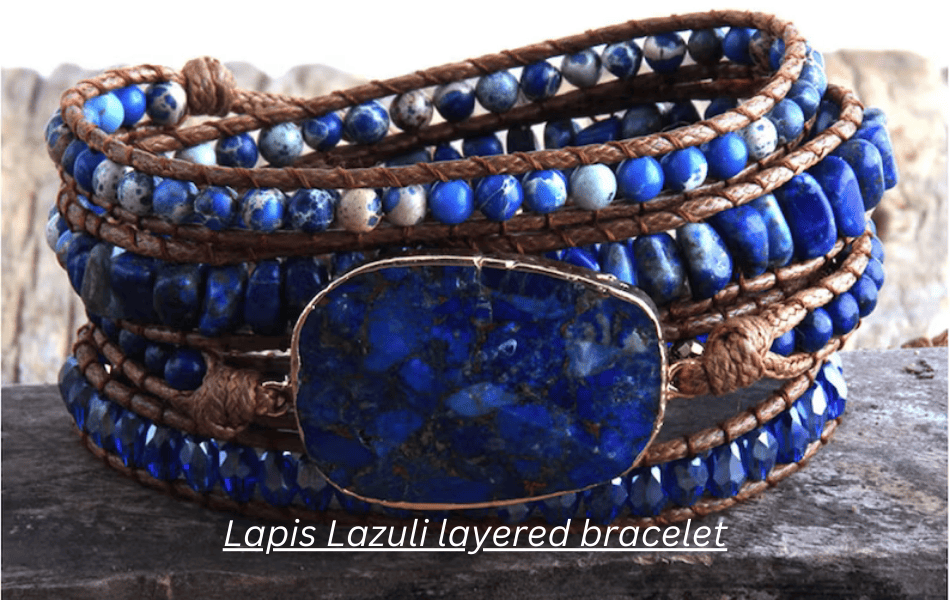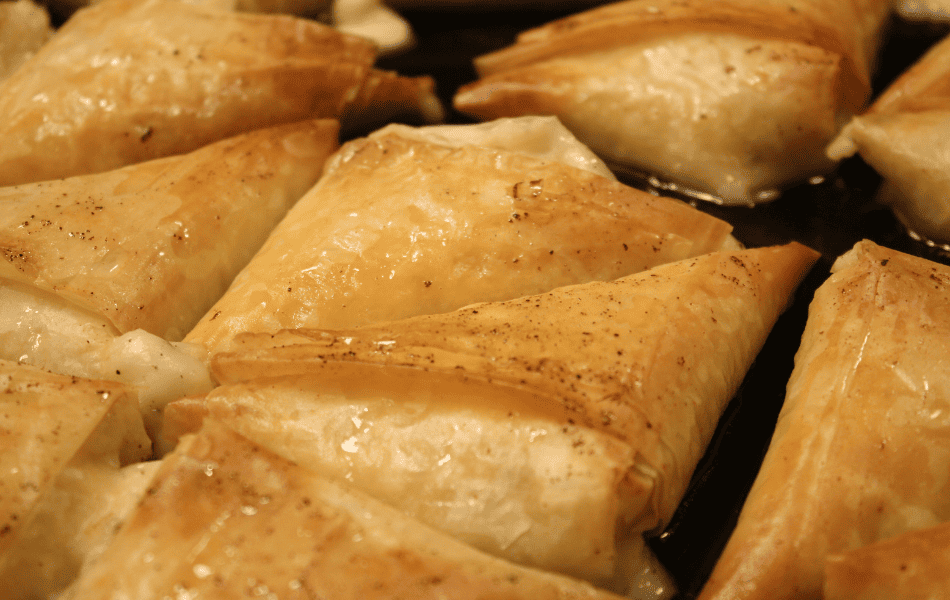Embark on a journey as we unearth the hidden treasure of Turkey’s Laz Community. Immerse yourself in their rich culture, traditions, and coastal charm.
Nestled along the picturesque Black Sea coast of Turkey, the Laz community stands as a testament to the region’s rich cultural diversity. The Laz people, an indigenous ethnic group, have inhabited these lands for centuries, carving out a distinct identity and leaving an indelible mark on the region’s cultural tapestry. Please read my original post on Turkey and all the amazing offerings!
Content
- Origins of the Laz Community
- Unique Language
- Ties to the Sea
- Traditions
- Cuisine Preferences
- Practical Tips for Travelers to Engage with the Laz Community
- Three Traditional Dishes of the Laz Community
- 3 Points the Laz community may Prefer Tourists to be Mindful of
- Other Related Articles including the Introduction to this Topic
Origins of the Laz Community
The origins of the Laz community can be traced back to ancient times. The Laz people are believed to be descendants of the Colchians, an ancient kingdom located in the region of modern-day Georgia and Turkey. They have a distinct cultural and linguistic identity that sets them apart from the surrounding communities.
The exact timeline of the Laz community’s origin is challenging to determine precisely, as it predates recorded history. However, their presence along the Black Sea coast can be traced back centuries, and their cultural heritage has been shaped by various historical influences and interactions with neighboring civilizations.
| Other great articles to read are Transform Travel with Purpose: Make a Positive Impact and A Guide to Food Tours that Showcase Authentic Cuisine, which is relevant to this topic. |
Unique Language
With roots tracing back to ancient times, the Laz community has nurtured a unique language, Lazuri, which is part of the South Caucasian language family. Their language, characterized by its melodic rhythm and intricate grammar, serves as a testament to their rich linguistic heritage.
Ties to the Sea

The Laz people are known for their close ties to the sea, as the coast has shaped their way of life and livelihood. Fishing, maritime trade, and a deep connection to maritime traditions have been central to the community’s identity throughout history. As you wander along the Black Sea coast, you’ll encounter vibrant Laz communities in towns such as Rize, Trabzon, and Artvin, each offering a glimpse into the Laz way of life.
Traditions
To this day, the Laz people proudly preserve their cultural traditions, music, and folklore. Traditional Laz music, with its soul-stirring melodies and heartfelt lyrics, evokes a sense of nostalgia and tells tales of the community’s history and daily life. The vibrant Laz dance forms, characterized by graceful movements and colorful costumes, provide a captivating spectacle that invites visitors to join in the rhythmic celebration.
Cuisine Preferences

The cuisine of the Laz people is a culinary delight that reflects their coastal heritage. Fresh seafood, locally sourced ingredients, and aromatic flavors combine to create a mouthwatering gastronomic experience. Indulge in Laz specialties such as hamsi pilaf (anchovy pilaf), mıhlama (a cheesy cornmeal dish), and Laz böreği (a savory pastry).
As you explore the Black Sea region, immerse yourself in the cultural heritage of the Laz community by visiting local markets, attending traditional festivals like the Laz Festival in Hopa, or engaging in homestays with Laz families. These experiences provide an authentic window into the everyday life, warmth, and hospitality of the Laz people.
Practical Tips for Travelers to Engage with the Laz Community
As you explore the Black Sea region, immerse yourself in the cultural heritage of the Laz community by visiting local markets, attending traditional festivals like the Laz Festival in Hopa, or engaging in homestays with Laz families. These experiences provide an authentic window into the everyday life, warmth, and hospitality of the Laz people.
By venturing into the heartland of the Laz community, travelers have the opportunity to witness a coastal gem that has remained off the radar of mass tourism. The Laz people, with their rich history, vibrant traditions, and strong cultural identity, invite you to delve into their world and discover the hidden treasures of the Black Sea coast.
A. Homestays
To immerse yourself in the Laz culture, consider arranging a homestay with a local Laz family. This offers a unique opportunity to experience their way of life firsthand, share meals together, and engage in conversations about their traditions and customs. Look for guesthouses or accommodations that facilitate homestay experiences in Laz communities along the Black Sea coast.

Lazika House (Rize):
- Located in Rize, Lazika House offers an authentic homestay experience with a local Laz family.
- Guests have the opportunity to stay in traditional Laz-style rooms and enjoy homemade meals prepared with local ingredients.
- The hosts are known for their warm hospitality and are eager to share their cultural traditions with visitors.
- Lazika House is conveniently situated for exploring the stunning natural beauty of the surrounding area, including tea plantations and the Black Sea coastline.
Explore Rize Province on Tripadvisor is a good place to start.
Lazuli Lodge (Trabzon):
- Lazuli Lodge, nestled in Trabzon, provides an immersive homestay experience in a Laz community.
- Guests can stay in comfortable rooms adorned with Laz-inspired décor and enjoy meals featuring traditional Laz cuisine.
- The hosts are passionate about preserving the Laz heritage and offer language exchange opportunities and cultural insights.
- Lazuli Lodge is ideally situated for exploring Trabzon’s historical sites, including the Hagia Sophia Museum and Sumela Monastery.
Trabzon Lodges on Tripadvisor give you different options.
Artvinli Home Stay (Artvin):
- Artvinli Home Stay, located in Artvin, offers a genuine homestay experience with a Laz family in a picturesque setting.
- Guests can experience Laz hospitality, savor homemade Laz dishes, and participate in cultural activities organized by the hosts.
- The hosts are enthusiastic about sharing their Laz culture, including music, dance, and traditional handicrafts.
- Artvinli Home Stay provides easy access to the stunning natural landscapes of Artvin, such as the Karagöl-Sahara National Park and the Çoruh River.
Please view the wonderful options on Airbnb
B. Language Exchanges
Language is a powerful tool for cultural understanding. If you’re interested in delving deeper into the Laz culture, consider participating in a language exchange. This could involve finding a language partner within the Laz community who is willing to teach you basic Lazuri phrases while you offer to help them with English or another language. Language exchanges foster meaningful connections and open doors to cultural insights.
“Kuçu!” – Translation: Hello!
- This phrase is a common greeting in Lazuri and can be used to say “hello” or “hi” when meeting someone.
“T’ibiza gapara” – Translation: Thank you.
- Use this phrase to express gratitude or appreciation. It is a polite way to say “thank you” in Lazuri.
“T’uz’çuna lazurika?” – Translation: Do you speak Lazuri?
- If you’re interested in engaging in a language exchange or simply want to ask if someone speaks Lazuri, this phrase can be helpful. It allows you to inquire if the person knows the language.
Remember to pronounce the words and phrases respectfully, and don’t hesitate to ask for help or clarification from native speakers if needed.
The Laz language, also known as Lazuri, belongs to the South Caucasian language family and is primarily spoken by the Laz people along the Black Sea coast of Turkey and Georgia. It has a distinct sound and phonetic characteristics that set it apart from other languages.
Lazuri is known for its melodic and rhythmic qualities. It features a range of vowel sounds, including both short and long vowels, which contribute to its musicality. The language also utilizes consonant clusters, making it phonetically rich and distinctive.
The pronunciation of Lazuri includes a variety of unique sounds. For instance, it has several vowel sounds that may not exist in other languages, such as the open-mid back unrounded vowel [ɔ] and the close-mid front rounded vowel [ø]. The language also includes consonant sounds that may be less common in other languages, such as the voiceless uvular fricative [χ] and the voiceless postalveolar affricate [t͡ʃ].
Due to the limited exposure of Lazuri outside the Laz community, it may sound unfamiliar to those who haven’t been exposed to it. However, its distinctive phonetics and musicality make it an intriguing language to listen to and explore.
To gain a better understanding of the sounds and intonations of Lazuri, it can be helpful to listen to recordings of native speakers conversing, singing traditional songs, or reciting poetry. These resources can provide a more immersive experience and a deeper appreciation for the unique qualities of the Laz language.
Listen and watch the video on Kazim Koyuncu, who died in 2005, song “Didou Nena” which shows the beauty of the lyrics in Lazuri, about a lover who left. You will hear how beautiful this language is.
C. Attend Cultural Events
Keep an eye out for cultural events and festivals that celebrate the Laz heritage. The Laz Festival in Hopa, held annually, is a vibrant gathering where you can witness traditional music, dance performances, and sample authentic Laz cuisine. Other local events, such as weddings or community celebrations, may also offer opportunities to engage with the Laz community and experience their cultural traditions firsthand.
D. Engage with Local Artisans
The Laz community is known for its rich artistic traditions. Take the time to visit local artisans and craftspeople who specialize in Laz-inspired artwork, woodcarving, or traditional textile weaving. Engaging with these artisans not only supports their livelihood but also provides insights into the artistic heritage of the Laz people.

- Lazuri Carpets: The Laz community is renowned for its skill in carpet weaving. Lazuri carpets are known for their intricate patterns, vibrant colors, and high-quality craftsmanship. These carpets often feature traditional motifs and designs that reflect the cultural heritage of the Laz people.
- Lazuri Embroidery: Embroidery holds a special place in Laz culture, with artisans creating beautiful designs on fabric using needles and thread. Lazuri embroidery showcases delicate patterns and motifs inspired by nature, folklore, and traditional symbols.
- Lazuri Woodcarving: Woodcarving is another traditional craft of the Laz community. Skilled artisans carve intricate designs and patterns on wooden objects, such as furniture, decorative items, and musical instruments. The woodcarvings often depict elements of Laz culture, including symbols, mythological figures, and scenes from daily life.
- Lazuri Jewelry: The Laz people have a long-standing tradition of jewelry making. Lazuri jewelry features unique designs that incorporate elements of nature, such as leaves, flowers, and animals. It is often crafted using silver or other metals, adorned with colorful gemstones or enamel work.
- Lazuri Pottery: Pottery-making is an art form that has been practiced by the Laz community for generations. Traditional Lazuri pottery showcases distinct shapes, patterns, and glazes. From decorative plates to functional vessels, Lazuri pottery reflects the community’s connection to the land and its artistic expressions.
E. Explore Laz Historical Sites
Discover historical landmarks that hold significance for the Laz community. For example, explore Laz castles, ancient sites, or places of worship that have played a role in their history. These sites often have stories and legends associated with them, offering a deeper understanding of the Laz culture and its connection to the land.
- Zilkale (Castle of Zil): Located in Rize province, Zilkale is an impressive medieval fortress perched high on a rocky hill overlooking the Fırtına Valley. This historical site played a crucial role in defending the region against invasions. Its strategic location offers breathtaking views of the surrounding landscape and the Black Sea. Exploring Zilkale allows you to step back in time and experience the architectural heritage of the Laz community.
- Atina (Sumela) Monastery: Situated in Trabzon province, the Atina Monastery, also known as Sumela Monastery, is a significant historical and cultural site. Built into the side of a cliff in the Pontic Mountains, this Greek Orthodox monastery dates back to the 4th century AD. The complex features impressive frescoes, chapels, and a striking rock-cut church. It holds great importance for both religious and historical contexts, offering a glimpse into the multicultural heritage of the region.
- Ayasofya Museum (Hagia Sophia Museum): Located in Trabzon, the Ayasofya Museum is a medieval church that has transformed over the centuries. Originally built as a Byzantine church in the 13th century, it later served as a mosque during the Ottoman era. Today, it stands as a museum that showcases the architectural fusion of Byzantine and Ottoman influences. Exploring the Ayasofya Museum allows visitors to witness the historical layers and cultural transitions that have shaped the Laz community and the region.
F. Respect Local Customs and Traditions
When engaging with the Laz community, it’s important to be respectful of their customs and traditions. Observe local etiquette, dress modestly when visiting religious sites, and seek permission before taking photographs of individuals. Showing respect for their way of life fosters positive interactions and promotes cultural exchange.
| By embracing these practical tips, you can forge connections with the Laz community and create meaningful experiences that go beyond surface-level tourism. Remember, the key to engaging with any community is to approach them with an open mind, genuine curiosity, and a willingness to learn and appreciate their unique culture. |
Three Traditional Dishes of the Laz Community
These traditional dishes highlight the culinary heritage of the Laz community and offer a taste of the region’s unique flavors and ingredients. Exploring Laz cuisine allows you to savor the marriage of fresh seafood, local produce, and traditional cooking techniques, providing a memorable gastronomic experience.
- Hamsi Pilaf: Hamsi Pilaf is a beloved Laz dish that showcases the region’s rich seafood heritage. It consists of fresh anchovies (hamsi) cooked with rice and flavored with various spices and herbs. The combination of tender fish and fragrant rice creates a delightful and satisfying meal that is often enjoyed by locals and visitors alike. If you would like to try this dish, follow How To Make Hamsili Pilav
- Mıhlama: Mıhlama is a savory cornmeal dish that is popular in Laz cuisine. It is made by cooking cornmeal with butter and cheese until it reaches a creamy consistency. The result is a rich and comforting dish with a slightly gooey texture. Mıhlama is often served as a breakfast or brunch option, providing a hearty start to the day. If you are feeling enterprising follow this Mıhlama Recipe.
- Laz Böreği: Laz Böreği is a savory pastry that is a staple in Laz cuisine. It is made by layering thin sheets of phyllo pastry with a filling that typically consists of local cheese, herbs, and butter. The pastry is then baked until golden and crispy, creating a delightful combination of flavors and textures. Laz Böreği is enjoyed as a snack, appetizer, or as part of a main course.

Laz Böreği
Ingredients
- Phyllo pastry sheets
- Local cheese (such as Lazur cheese or feta cheese)
- Butter or olive oil
Directions
- Preheat your oven to the recommended temperature mentioned on the phyllo pastry package.
- Prepare the filling by crumbling the cheese into a bowl. You can adjust the amount of cheese according to your preference.
- Lay one sheet of phyllo pastry on a flat surface. Brush it lightly with melted butter or olive oil to prevent it from drying out.
- Place another sheet of phyllo pastry on top of the first sheet, and again brush it with butter or olive oil.
- Repeat this layering process with a total of 5-6 phyllo pastry sheets, brushing each one with butter or olive oil.
- Spread a thin layer of the cheese filling evenly across the top sheet of phyllo pastry.
- Starting from one end, carefully roll the pastry layers into a tight cylinder.
- Grease a baking dish with butter or olive oil and place the rolled pastry into the dish.
- Brush the top of the pastry with more butter or olive oil.
- Bake the Laz Böreği in the preheated oven for about 25-30 minutes or until it turns golden brown and crispy.
- Once baked, remove the Laz Böreği from the oven and allow it to cool slightly before serving.
- Cut the pastry into slices or squares and serve it warm.
Laz Böreği can be enjoyed as a delicious snack or as part of a meal. The combination of flaky phyllo pastry and savory cheese filling makes it a delightful treat with a taste of Laz cuisine.
3 Points the Laz community may Prefer Tourists to be Mindful of
It’s worth emphasizing that these points are general considerations, and each individual within the Laz community may have their own unique perspectives and preferences. As a responsible traveler, it’s crucial to approach the community with respect, open-mindedness, and a willingness to learn and adapt to their cultural norms. By doing so, you can foster positive interactions, promote cultural exchange, and have a more meaningful and respectful experience with the Laz community.
- Disrespecting Cultural Norms: The Laz community takes pride in its cultural heritage and traditions. It is essential for tourists to respect and observe local customs, traditions, and etiquette. For example, dressing modestly when visiting religious sites, seeking permission before taking photographs of individuals, and being mindful of appropriate behavior in sacred or traditional spaces.
- Exploitative Behavior: The Laz community, like any other, does not appreciate exploitative behavior from tourists. This includes haggling excessively over prices, taking advantage of local vendors or artisans, or engaging in activities that harm the environment or local communities. Responsible and sustainable tourism practices are highly valued by the community.
- Intrusive or Disruptive Behavior: The Laz community cherishes its peaceful and close-knit communities. Tourists should be mindful of their behavior and avoid actions that disrupt the tranquility and daily life of the community. This includes maintaining appropriate noise levels, respecting private spaces, and adhering to local regulations and guidelines.
Other Related Articles including the Introduction to this Topic
- Revealing Turkey’s Hidden Cultural Gems: a Journey Beyond
- Transform Travel with Purpose: Make a Positive Impact
- A Guide to Food Tours that Showcase Authentic Cuisine
Recent Posts
Discover insider tips to find cheap flights from the UK, save on easyJet, Ryanair & BA, and score the best weekend and last-minute deals. Why You’re Paying Too Much for Flights Most UK...
Discover the sounds of travel, from laughing kookaburras to market chatter, church bells to ocean waves - a journey heard as much as seen. It always starts with a sound. The other day, walking...


2 thoughts on “Unearth Turkey’s Gem: Immerse Yourself in the Laz Community”
Comments are closed.